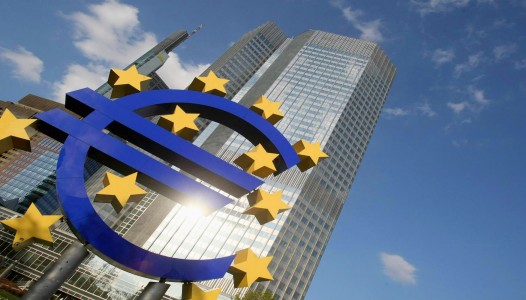A lot happened when Dragi spoke to the European Parliament in November last year. With Lithuania, the euro welcomed its 19th member. The ECB started the asset purchase programme on March 9. The ECB also moved to a new building which has been officially inaugurated last week. The ECB unveiled a new 20 euro banknote; and in a milestone towards even greater transparency of decision-making procedures, the ECB published on 19 February for the first time the accounts of a monetary policy meeting of the Governing Council of the ECB. The following speech of Mr. Draghi was held on March 23 in Brussels.
Mario Draghi : “In the remainder of my remarks, I will explain some important aspects of the extended asset purchase programme and present a first assessment of its effects. I will then, as the coordinators have asked me to do, elaborate on the link between price stability and financial stability and will speak briefly about the macroprudential tools the ECB has now at its disposal.
Economic outlook and monetary policy
The most recent data and survey evidence show that growth is gaining momentum. The basis for the economic recovery in the euro area has clearly strengthened. This is due to in particular the fall in oil prices, the gradual firming of external demand, easy financing conditions driven by our accomodative monetary policy, and the depreciation of the euro. These more positive developments are also reflected in the recent ECB staff projections. Compared with the projections from December, the outlook for 2015 and 2016 has been visibly revised upwards by 0.5 and 0.4 pp., respectively.
We expect inflation in the euro area to remain very low or negative in the months ahead, because the recent fall in oil prices will continue to influence the figures until later in the year. However, inflation rates are expected to start increasing gradually towards the end of the year. They will be supported by aggregate demand, by the impact of the lower euro exchange rate and by the recovery of oil prices from their current troughs in the years ahead. The latest ECB staff projections foresee average inflation at 0.0% in 2015, rising to 1.5% in 2016 and 1.8% in 2017.
A key factor for a full recovery of the euro area economy and ensuring that inflation does not remain too low for too long will be the extra stimulus that the Governing Council decided to introduce in January under the ECB’s expanded asset purchase program. This decision was premised on two considerations. First, the momentum supporting the economic recovery was viewed as too weak and fragile to give us sufficient confidence that inflation would return to levels closer to 2% over a policy relevant medium-term horizon. Second, the expansive potential of the monetary policy measures that had been decided between June and October was seen as uncertain. This was because they were largely dependent on banks’ own decision to borrow Eurosystem funds and lend them on to their customers. The cumulative uptake under the first two targeted long-term refinancing operations stood at around €212.4 billion. Therefore, the monetary impulse had to be reinforced and needed to be quantitatively more predictable and controllable to put the economy and the outlook for price stability on a firmer footing.
On 9 March, we started purchasing public-sector securities as part of our expanded asset purchase programme, which also comprises interventions in the ABS and covered bond markets. Overall, our asset purchases will amount to €60 billion per month. The pace of purchases so far puts the overall program on track to reach a total of €60 billion in March. At this point in time we see no signs that there will not be enough bonds for us to purchase. Feedback from market participants so far suggests that implementation has been very smooth and that market liquidity remains ample.
Our interventions have accelerated a trend that had been evident since some time. A steady process of re-integration across financial markets and jurisdictions had been under way since the summer of 2012. What is new today, however, is that lower interest rates in capital markets are increasingly being transmitted through the entire financial intermediation chain. Lower funding costs for banks have started to influence the cost of borrowing for households and companies. As bank lending rates are being reduced, new investment projects – previously considered unprofitable – become attractive.
In the short-run, this should sustain the demand for credit and investment. Indeed, the banks covered in our Bank Lending Survey confirm that the easing of lending conditions is progressing hand-in-hand with a resurgent demand for credit to finance business investment. In the longer-term perspective, this will increase potential output.
We intend to carry out our purchases at least until end-September 2016, and in any case until we see a sustained adjustment in the path of inflation which is consistent with our aim of achieving inflation rates below, but close to, 2% over the medium term. The Governing Council will take a holistic perspective when assessing the path of inflation. It will evaluate the likelihood for inflation not only to converge to levels that are closer to 2%, but also to stabilize around those levels with sufficient confidence thereafter. When doing this assessment, the Governing Council will follow its monetary policy strategy and concentrate on inflation trends, looking through any surprise in measured inflation (in either direction) if judged to be transient and with no implications for the medium term outlook for price stability.
The positive results of our new purchase programme should not distract other stakeholders from delivering their contribution to put the economy back on track. Fiscal policies should support economic growth, while ensuring debt sustainability. A full and consistent implementation of the Stability and Growth Pact is key for confidence in our fiscal framework. Moreover, structural reforms should be implemented promptly and with determination. The combination of improved economic structures and sound fiscal policies indeed has the potential to make our monetary policy more effective by encouraging economic actors to take advantage of improved financing conditions and increase investment.
Price stability and financial stability
Let me now turn, as suggested by the ECON coordinators, to the interaction between price stability and financial stability. Price stability is, as you know, the primary objective of the ECB and the Eurosystem. And achieving price stability is a necessary condition for financial stability. Clearly, unstable inflation developments can distort a wide variety of macroeconomic and financial fluctuations, to the extent that these distortions become harmful for the economy. For example, unstable inflation developments could complicate pricing of assets and blur the signals from relative asset price adjustments with detrimental effects on resource allocation.
However, price stability is not a sufficient condition of financial stability. The last crisis proved that financial stability can be at risk even at times when price stability is achieved. And monetary policy decisions also affect expectations and a wide range of asset prices. Our monetary policy measures are necessary to achieve our primary objective of maintaining price stability. But we are nevertheless aware that they may have unintended side effects on the financial system. For example, asset prices may increase to levels that are not justified by fundamentals, while periods of low yields and volatility may invite excessive risk taking by financial investors. In turn, such developments can act as an amplifying mechanism for any eventual financial instability.
At the same time, financial stability is a precondition for the efficient conduct of monetary policy. To be successful in delivering price stability, monetary policy relies on the effectiveness of the monetary transmission mechanism. In this context, a stable and non-fragmented financial system is important for the smooth transmission of monetary policy signals. We are monitoring closely any potential risks to euro area financial stability, including those from excessive risk taking. Currently these risks are contained. And should they emerge, macro-prudential policy would be best suited to address them. Recently, indeed some national authorities in the euro area have decided to implement such measures that go in the direction of preventing financial stability risks from emerging at national level.
Regarding macro-prudential oversight of banks in the euro area, this is shared between national authorities and the ECB. The ECB may top-up specific national macro-prudential measures if it considers these insufficient to mitigate systemic risks. The ECB and the national authorities have at their disposal macro-prudential instruments for the banking sector, as provided in the Capital Requirements Directive and Regulation (CRD IV/CRR). These include capital buffers, such as the countercyclical capital buffer, systemic risk buffer and capital surcharges for systemic institutions. Additional measures may also be used to improve banks capital and liquidity position, limit their large exposures or increase capital requirements for certain asset classes, such as interbank and real estate exposures. To make the most effective use of these instruments and strengthen the stability of the financial system, the ECB and national authorities regularly exchange information on macro-prudential policies. Processes for formal notifications to the ECB by national authorities regarding intended measures have already been activated. Overall, the ECB will help to identify potential financial stability risks and foster a coordinated stance for macro-prudential policies among euro area Member States.”




